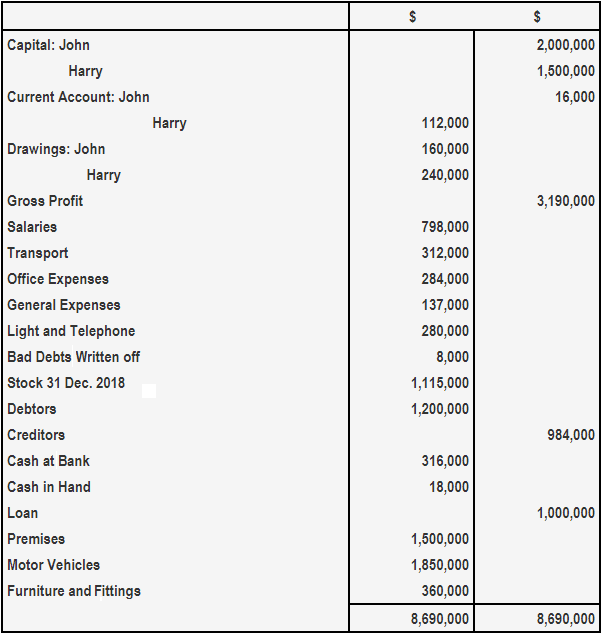
Insurance serves as a strategic tool for businesses to manage financial losses by transferring risk to a third party. Various types of insurance policies cater to different risks, such as property damage, liability claims, and business interruption. By paying a premium, a company can safeguard against substantial financial damage that could otherwise jeopardize its operations. This is particularly the case when the loss is derived from just the operational activities of a business. Expenses can also be recorded into any number of different line items on an income statement to reflect the particular type of expense.
Capital and Revenue Losses FAQs
However, an increase in the market value of securities may under some circumstances, be sufficient evidence to recognise gain. (3) Gains and losses may also be described as operating or non-operating depending on their relation to an enterprise’s earning process. For example, losses on writing down inventory from cost to market are usually considered to be operating losses, while losses from disposing of segment of enterprises are usually considered non-operating losses. In financial risk management, the function is mapped to a monetary loss. Still different estimators would be optimal under other, less common circumstances. They may be the result of a sale of an asset below its carrying amount, from a lawsuit, or a write-down of an asset.
- This strategy, however, is only short-term, as a company without profits will not survive in the long-term.
- Net loss occurs when all sources of income are less than the total of all expenses and losses from disposing assets.
- In the realm of finance, uncertainty is a key element that both individuals and businesses must navigate.
- It’s the bottom line, the figure most stakeholders dart their eyes towards.
Where Are Gains and Losses Reported?
CFI is the global institution behind the financial modeling and valuation analyst FMVA® Designation. CFI is on a mission to enable anyone to be a great financial analyst and have a great career path. In order to help you advance your career, CFI has compiled many resources to assist you along the path. Moreover, transparency in presenting the P&L statement strengthens trust and communication with investors and stakeholders.

Profit and Loss Statement (P&L) Definition
This is a very simple method that only accounts for cash received or paid. A business records transactions as revenue whenever cash is received and as liabilities whenever cash is used to pay any bills or liabilities. This method is commonly used by smaller companies as well as people who want to manage their personal finances.
Do you own a business?
It doesn’t capture non-financial factors critical to a company’s success, and it ignores cash flow and timing, which are vital for liquidity and operational stability. By analyzing revenue trends, evaluating the cost structure, and assessing profitability ratios, stakeholders can make informed decisions and chart the course for the future. Its primary purpose is to assess a company’s ability to generate profit by increasing revenue, reducing costs, or both.
Ignores Cash Flow and Timing
This prompts state officials to cut the current and upcoming fiscal year revenue projections by a significant amount and, unless they can cut expenditures as well, they will be operating at a net loss. Below is a break down of subject weightings in the FMVA® financial analyst program. As you can see there is a heavy focus on financial modeling, finance, Excel, business valuation, budgeting/forecasting, PowerPoint presentations, accounting and business strategy. For example, a painter may be paid for the service after it has been performed, and the incurred expense changes to a paid expense. Another example would be when a business enters into a lease agreement to rent office space for a period of two years.
Your value in the asset is how much you spent to acquire it, minus any depreciation you might have claimed based on using the asset over the years. Net loss occurs when all sources of income are less than the total of all expenses and past year tax 2020 losses from disposing assets. The indirect effect of financial losses is a drop in investor confidence. While one poor financial performance might not shake the confidence of investors, consistent losses over a period of time can.
Revenue minus cost of goods sold, excluding other expenses such as operating costs and taxes. Say that substantial refunds were expected as companies took advantage of outstanding tax credits previously issued as a way of retaining jobs in the state during the recession. As a result, the state treasurer anticipates a decrease of $99 million in revenue from the state’s principal business taxes.
Additionally, businesses should regularly review and adjust their coverage to reflect changes in their operations and risk profile. Another example would be if Company A has $200,000 in sales, $140,000 in COGS, and $80,000 in expenses. Subtracting $140,000 COGS from $200,000 in sales results in $60,000 in gross profit.
This might cause severe reputational damage and impede trust building among stakeholders, customers, and the community-at-large. The total amount of money generated from sales or services before expenses are deducted. Costs that are necessary for a company to conduct its primary business activities, such as wages, rent, and utilities. Once the company is satisfied that the claim is genuine, it then determines the accuracy of the recorded value.

Recent Comments